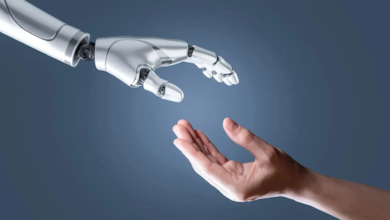Top Benefits of Using Cobot Welding in Manufacturing

The rise of automation has introduced new ways to enhance efficiency, and cobot welding is one of the most impactful innovations in manufacturing today. By combining the precision of robotic systems with the adaptability of human operators, cobot welding delivers consistent, high-quality welds while improving workplace safety and reducing production costs.
This technology allows manufacturers to streamline workflows, handle complex welding tasks, and maintain flexibility in operations. In this article, we will explore the top benefits of using cobot welding in manufacturing and how it can transform your production process.
Automation in Manufacturing
Automation in manufacturing involves using robots, AI, and smart devices to perform production tasks with less human effort. This makes work faster, safer, and more accurate, while saving money and helping factories adjust to new needs.
Key Components
- Robots and Cobots
- Robots are machines that can do the same task many times or handle dangerous jobs by themselves. They usually work away from people to stay safe.
- Example: A robotic arm in a car factory that welds or paints parts continuously.
- Cobots (Collaborative Robots) work safely alongside humans and help with tasks that need human judgment, skill, or adaptability.
- Example: A cobot assisting a worker to assemble small electronic components.
- Robots are machines that can do the same task many times or handle dangerous jobs by themselves. They usually work away from people to stay safe.
- AI and Machine Learning: These tools help predict maintenance needs, control quality, and optimize production by analyzing real-time data.
- IoT Integration: Connected devices monitor equipment and conditions, enabling smarter decisions.
- Digital Twins: Virtual copies of equipment allow simulation and testing to improve design and operations.
Automation is transforming manufacturing by improving efficiency, quality, and safety. While challenges exist, ongoing technological advances continue to make production smarter, faster, and more adaptable.
Top Benefits of Cobot Welding in Manufacturing
Top 1: Enhanced Welding Quality
Cobots make welding more accurate and consistent. Unlike human welders, who can get tired and make small mistakes, cobots follow exact patterns, giving exact results. Their precision reduces errors and the need to redo work, saving time and materials. Cobots can also handle difficult or repetitive welding tasks that are hard for humans, keeping quality high.
Cobots make welding more accurate and consistent. Unlike human welders, who can get tired and make small mistakes, cobots follow exact patterns. This precision reduces errors, saves time and materials, and lowers the need for rework. This makes products stronger, more reliable, and longer-lasting. Consistent welding also keeps customers happy and reduces costs from returns or repairs.
Top 2: Increased Productivity and Efficiency
Cobots boost factory production by working continuously without breaks. This speeds up production, enabling products to be completed faster and increasing overall output. With 24/7 operation and minimal downtime, cobots ensure smooth, efficient, and uninterrupted workflows.
In welding, cobots handle repetitive and time-consuming tasks, which speeds up production and keeps work organized. By taking over these tasks, cobots prevent slowdowns on the production line, ensuring smoother operations, meeting higher demand, and maintaining consistent product quality.
Top 3: Improved Workplace Safety
Cobots make workplaces safer by taking over dangerous jobs that put people at risk. In welding, workers can face extreme heat, sparks, toxic fumes, and heavy materials, which may cause injuries or health problems. Cobots handle these risky tasks, reducing accidents and protecting workers.
Modern cobots also come with safety features like sensors to detect people, limits on force to prevent harm, and emergency stop functions. This allows them to work safely alongside humans without the need for safety cages. As a result, the workplace becomes both safer and more cooperative, with humans and cobots working together effectively.
Top 4: Cost Savings
Cobot welding helps manufacturers save money in different ways. By taking over repetitive welding tasks, cobots reduce the need for human labor. This is especially useful in places where wages are high or there aren’t enough skilled welders. Cobots are also very accurate, which means fewer errors and less rework. They use gas, filler wire, and electricity more efficiently, which reduces waste and saves money.
Although cobots may have a high initial cost, they typically pay for themselves within 1 to 3 years through reduced labor expenses, decreased waste, improved efficiency, and higher product quality. Beyond that, they continue to provide long-term cost savings.
Top 5: Flexibility and Adaptability
Cobots are very flexible and easy to use. Unlike traditional robots that need complicated programming, cobots can be quickly programmed or reprogrammed for different welding tasks, which is great for factories where production changes often. Their small size and lightweight design make them easy to move between workstations.
They can safely work alongside humans, so they can be added to existing production lines without major changes or extra space. Cobots can handle both small, custom orders and large, high-volume production. This means manufacturers can quickly adjust to market demands, introduce new products, and customize production without slowing down operations.
Top 6: Workforce Support and Skill Enhancement
Cobots are meant to help workers, not replace them. In welding, they take over repetitive or hard tasks, so skilled welders can focus on more complex and important work. This makes jobs more satisfying because workers spend time on tasks that need skill, creativity, and judgment.
Cobots also help with labor shortages by letting workers handle heavier workloads without lowering quality. This reduces stress and the risk of burnout.
Additionally, working with cobots gives employees a chance to learn new skills in automation and robotics. This prepares them for advanced roles, improves career opportunities, and keeps the workforce competitive in modern manufacturing.
Top 7: Scalability for Future Growth
Cobots provide manufacturers with the flexibility to rapidly and efficiently expand their production capacity. When demand increases, additional cobots can be added to production lines without major disruptions or costly infrastructure changes. Their ease of programming and reprogramming allows them to take on different tasks as production needs evolve.
Cobots also integrate seamlessly with smart manufacturing systems.
They can collect and analyze real-time data, monitor performance, and optimize workflows, helping factories run more efficiently and make better decisions.
Investing in cobots also prepares companies for future technologies such as artificial intelligence (AI) and machine learning. By adopting these technologies, manufacturers can continue improving efficiency, innovating production processes, and staying competitive in a rapidly changing market.
Conclusion: The Value of Cobot Welding
Cobot welding is changing manufacturing by combining the accuracy of robots with the flexibility of human workers. It ensures high-quality welds, improves productivity, and keeps the workplace safer by handling difficult or risky tasks.
Cobots make fewer mistakes, reduce rework, and use materials more efficiently, saving money and improving productivity.
They can handle both small custom orders and large production runs, so manufacturers can adapt quickly to changing needs. Cobots also help workers focus on skilled tasks and learn new skills in automation and robotics.
By making it easy to scale production and work with smart manufacturing systems, cobots prepare companies for future technologies like AI and machine learning. Cobot welding makes work more accurate, faster, and safer, saves money, helps workers learn and grow, and supports the long-term success of a business.




